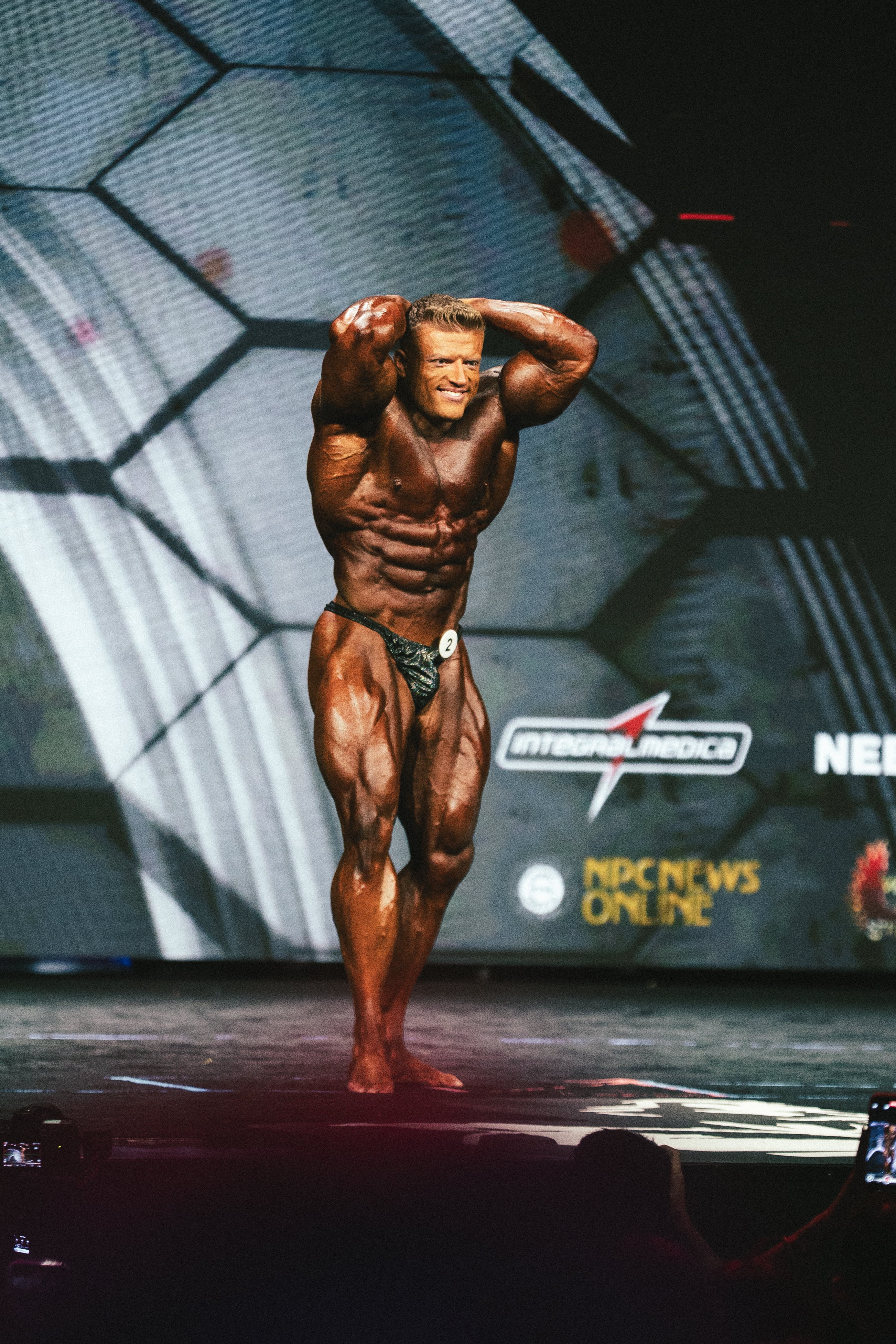Tags: Competition preparation
How Does a Competition Actually Work?
First of all, you have to register for the competition. These days, this can usually be done online. Depending on the competition, there is a registration one or two days before the event or directly on the day of the competition. There, the athletes receive their start number and their certificate for participation in the competition.
During registration, height is also checked in order to assign athletes to the respective classes. If there is a weight limit, athletes must also weigh themselves on site. If the weight does not fit within the limit, participants usually have a few hours to reach the required weight. Otherwise, they are either not allowed to start (e.g. Classic Physique athletes) or have to switch to a heavier class (e.g. Open Bodybuilding athletes).
Preparation for the Competition
Tanning and Oil
After registration, the tanning process begins. The athletes can either do this themselves or have it sprayed on-site by professional tanning providers. Usually two to three layers are applied to show off the muscles optimally under the strong stage lights, as the spotlights on the stage absorb a lot of light. Shortly before the performance, the athletes are oiled to better highlight their muscles.
Backstage Preparation
After the tanning is complete, the athletes wait backstage until their class is called. About 30 minutes before the performance, they start pumping up their muscles so that they can present their muscles on stage, plump and defined.
The Course of the Competition
A bodybuilding competition is divided into two main phases: the prejudging and the final.
1. Prejudging – The First Assessment
In the first round, all athletes come onto the stage in so-called callouts. This is initially done in the order of their starting numbers. Usually eight to ten athletes are on stage at the same time and present the basic poses. In this phase, all participants in the same class are lined up next to each other on the stage to be compared.
The standard poses include:
- Front Double Biceps
- Side Chest
- Back Double Biceps
- Etc.
The judges use these poses to evaluate the symmetry, muscle definition and overall aesthetics of the athletes. After all athletes have shown their basic poses, the individual presentations follow.
The head judge then calls out the callouts. The best athletes are no longer called out according to their starting number, but according to their placement assessment.
- First Callout: Usually 1-8th place
- Second Callout: 9th-16th place
- Additional callouts for lower rankings
- Etc.
After the prejudging, it is decided which athletes have reached the final. Depending on the size of the competition, either the top 5 or top 10 qualify.
Strong posing is just as important in bodybuilding as muscle growth and competition preparation. Learn how to showcase your physique optimally and impress on stage. Learn more about posing in bodybuilding.
2nd Final – The Battle for Victory
After a break, during which the athletes can recover and usually lie down backstage, the finalists return to the stage. During this time, the judges make their final decisions.
Additional Presentations
Depending on the format, some competitions have an intermediate round in which athletes return to the stage to emphasize certain muscles or body parts.
The final follows in the late afternoon or evening, where the best athletes from the prejudging appear again. This is where the rankings are decided. All athletes show their best poses again and are often lined up next to each other in different pairs or groups to present the best muscle groups and the best overall form.
Free Posing Routine
In the final round, athletes are allowed to show their own free poses for a short period of time. This is the moment when athletes can show their best posing to earn extra points.
The Decision and Award Ceremony
After the last posing round, the judges announce the winners and placings of the individual classes.
- The winners of each weight class or category receive medals or trophies.
- In larger competitions there are often prize money or sponsorship prizes.
- In some cases, an overall winner is also chosen, consisting of the first-place finishers in the various classes.


